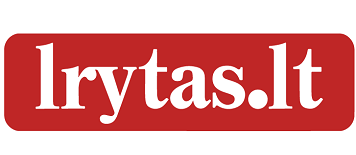
This was to be expected. A month ago, the head of Russia’s FSB, Sergei Naryshkin, publicly declared that Poland has a claim on Western Ukraine, and it is only a matter of time before and by what means it will “settle” on the lands that once belonged to it, Mečys Laurinkus says in lrytas.lt
This is a recurring theme in the Russian propaganda media. The conspiracy they are spinning is the mobilisation of Polish troops on the Belarusian border as part of the planned ‘aid’ to Ukraine to fight not only Russia.
Just recently, Lukashenko, the “father” of Belarus, told a Ukrainian journalist what will happen in the near future.
With a short wand on a map, he showed how Russia would take Kharkiv, overwhelm the Ukrainian army on its way to the Crimea, cut Ukraine off from the Black Sea, and Poland would swallow western Ukraine. Ukraine will still have a small piece of territory left. And what will you do there? Batka asked the fatherly young journalist. Naryshkin’s lectures could not have had any follow-up. In Lithuania, there were rumours about Belarusian “Litvins”. They were the actual inhabitants of the Grand Duchy of Lithuania, who founded Vilnius.
Already in the origins of this pseudo-theory, going back even to the 19th century, the idea of “Litvinas” was assessed by professional historians as pseudo-historiographical, slightly trampled on in the streets of Minsk in 1991, at the time of the collapse of the USSR, and is now being recalled again, mainly on YouTube, but with a “different sauce”.
Isn’t it only Vilnius that should think about its origins and its true belonging? Lithuania has vigorously supported and continues to support the uprising of the new generation of Belarusians against the regime and their breaking away from Russia, but the latter provocatively asks: do you naive Lithuanians not know about the ‘backward’ thoughts of Belarusian nationalists?
Our politicians have spoken up and declared that ‘Litvinism’, although a marginal theory in the background of historical science, is now politicised and ideologised and must be combated. This pseudo-historical “debate” was immediately linked to the partial border with Belarus. And should there not be a complete closure? And the same conditions of passage for both Russian and Belarusian citizens.
Who knows how many “Litvins” there are among those fighting against the Lukashenko regime or forced to flee from it – as far away from Russia as possible, but with Vilnius.
Of course, what I write is exaggerated. But it is common in history for what is “floating in the air” to be dragged to the ground. Naturally, when asked what the ideas of ‘Litvinism’ mean, the Belarusian opposition leader, S. Tsikhanouskaya, commented: “I think that this problem is artificially created. I am absolutely, 99% sure Belarusians have never heard of Litvinism. The Litvinism theory was put forward to stir up trouble between Lithuanians and Belarusians.”
Similarly, the well-known political scientists in Lithuania, V. Jurkonis and M. Milta, also consider the talk about “Litvinism”. They believe that the Kremlin’s ears are sticking out here.
In the Kremlin’s extracurricular activities, “historians” of various ranks often say who made Vilnius Lithuanian, who owns Klaipėda, what territories Russia gave to Poland… However, while agreeing with Ms Tsikhanouskaya about Russia’s policy of cross-pollination, I would not like to agree that the Belarusian people do not even know what ‘Litvinism’ is and that it is only discussed in Lithuania.
In Belarus, a lot of attention is paid to historical heritage, and it is not just for curiosity. Strange as it may seem, Lukashenko’s Belarus, under Russia, is developing the concept of an independent country with deep roots of statehood, based on the Lithuanian People’s Republic. I was convinced of this even before the youth uprising in Minsk when I visited a now-closed Lithuanian school in Belarus.
In short, everything that we know about our antiquity, and more specifically about the GDL, the Belarusians, and probably not with the dictator at their backs, attribute to themselves to the merits of their ancestors. In Lida, for example, visitors are greeted by an impressive monument of Gediminas on horseback, and behind it, a restored (cemented) ancient giant fortress with a museum and national specialities. The museum is modern and computerised. Here, you can easily see that Belarusians created, ruled and made famous the LDC.
The bookstore in Lida is also interesting. On the shelf dedicated to history lessons, there is a series of beautifully produced slim books about Gediminas, Vytautas, Algirdas, Svitrigailas and other princes who contributed to the emergence of Belarus as a state. But you can start studying Lithuanian history all over again.
I have discovered a solid two-volume Russian-language History of Belarusian Statehood: Volume I – from the origins to the end of the eighteenth century; Volume II – Belarusian statehood during the period of the Russian Empire to the beginning of the twentieth century. Three more volumes have been announced. There is no doubt that this is a solid academic publication.
I do not know what is written in the other volumes, but in the first two volumes, the concept is evident and consistently promoted – the Belarusian state, with the GDL and Vilnius, goes back almost to the Stone Age, to the national movement in the 19th century, which covered the whole of Europe. There, we find the following text: ‘Between 1905 and 1917, the Belarusian national state ideology went from the autonomy of the Belarusians and Lithuanians within the Russian Empire to a Belarusian independent state… The memory of the GDL as a form of Belarusian statehood lay at the basis of the Belarusian national revival.” The word “Litvins” is also found in numerous quotations from the thoughts of Belarusian figures of the time.


Be the first to comment